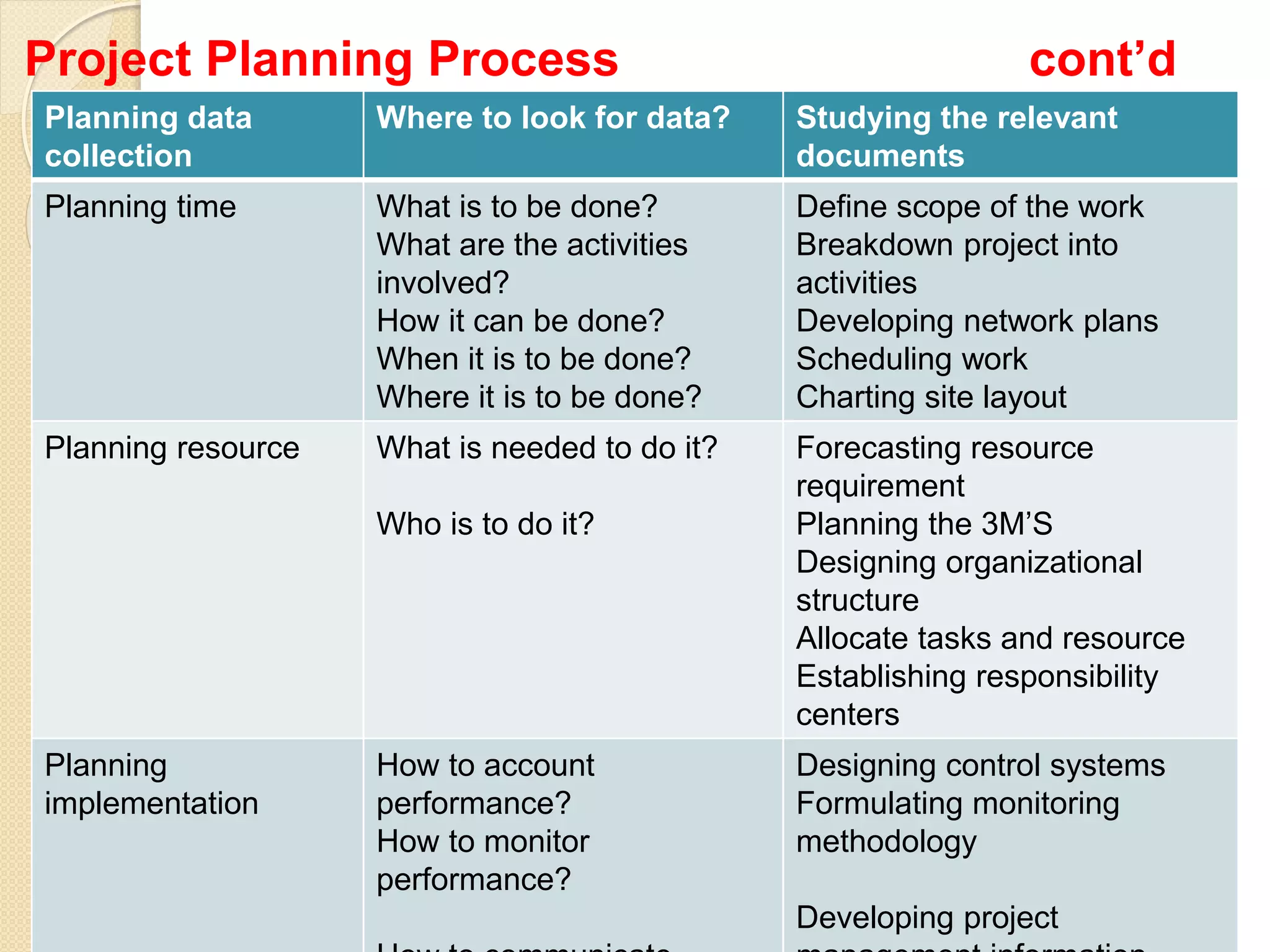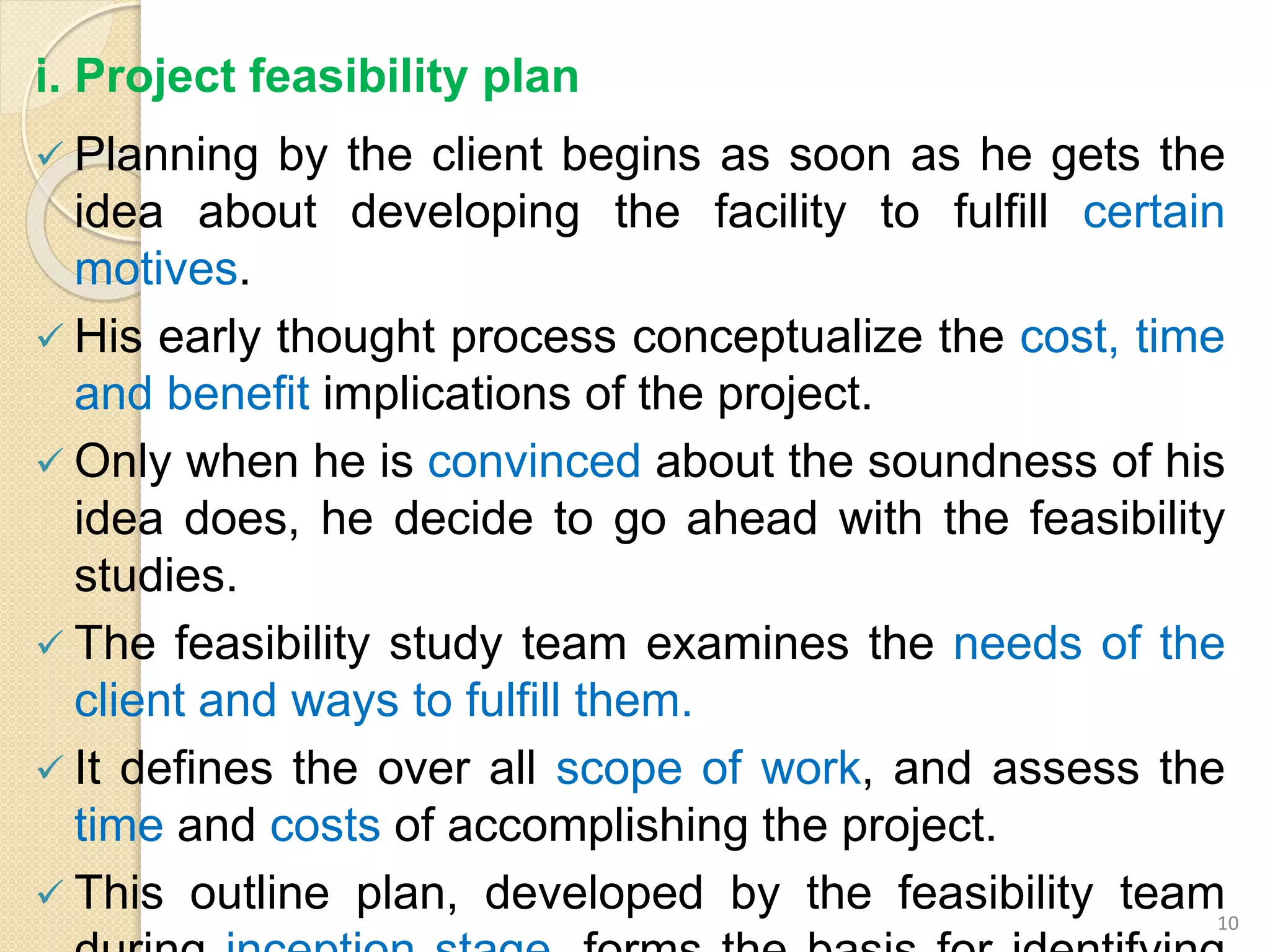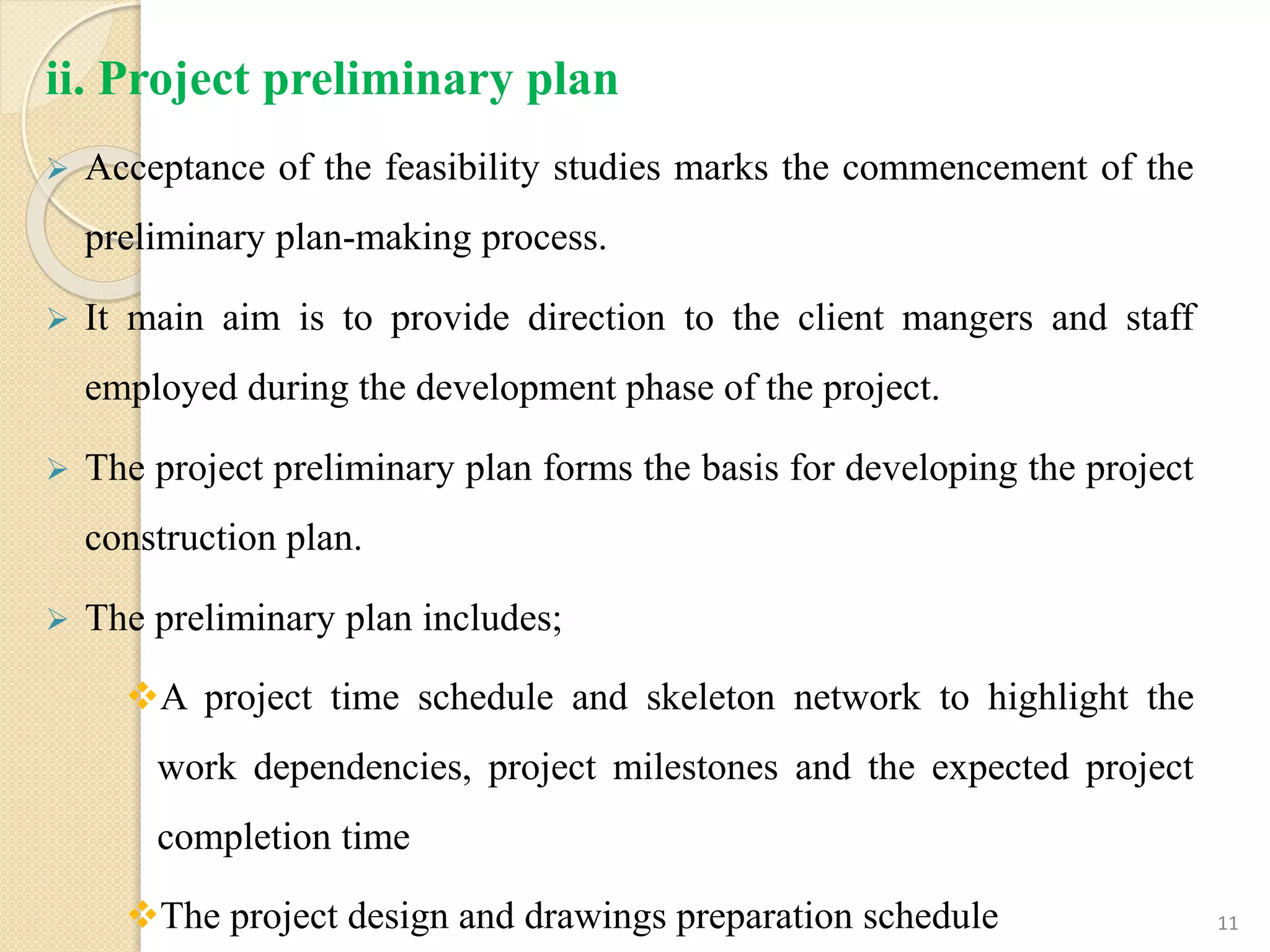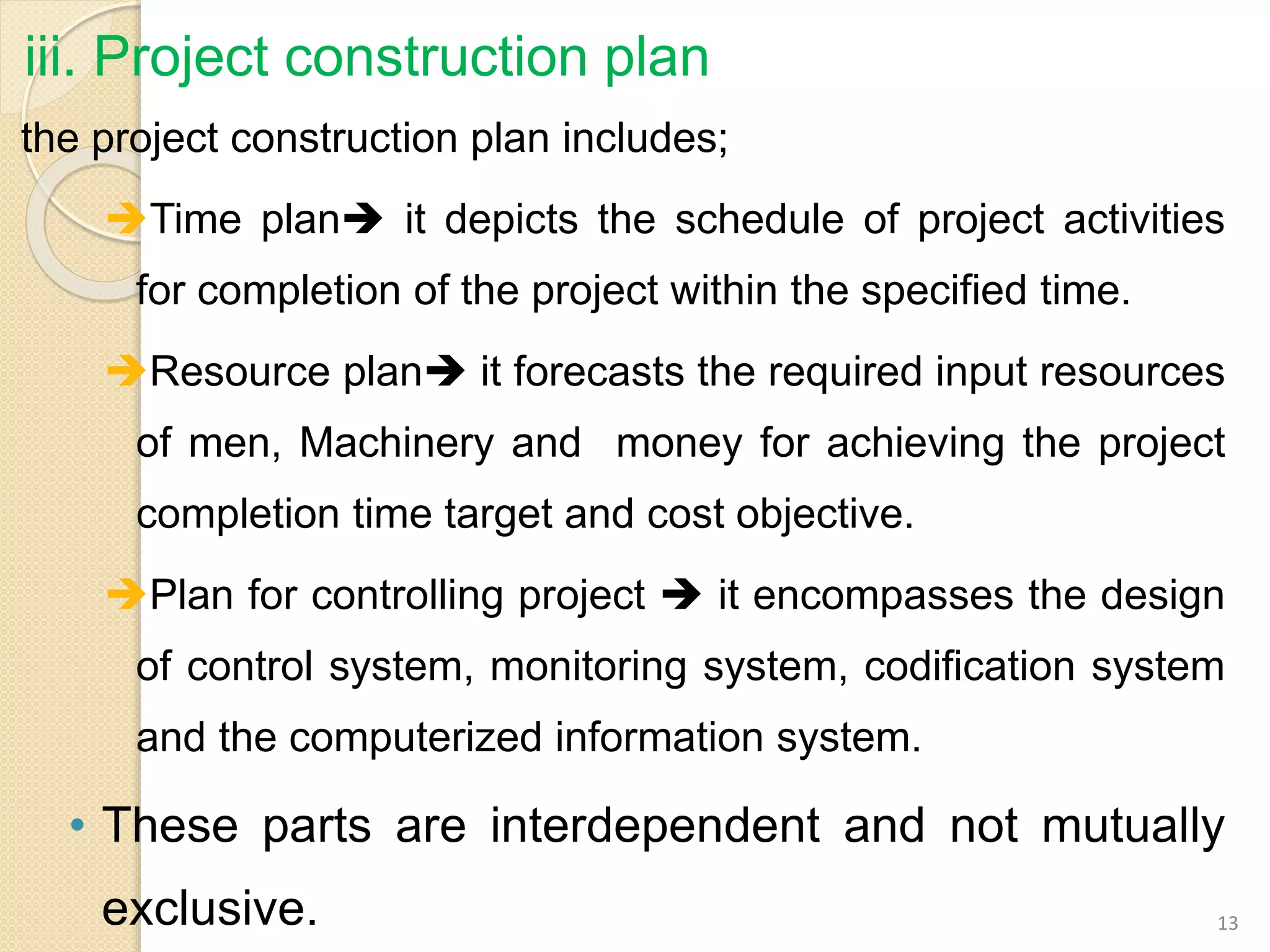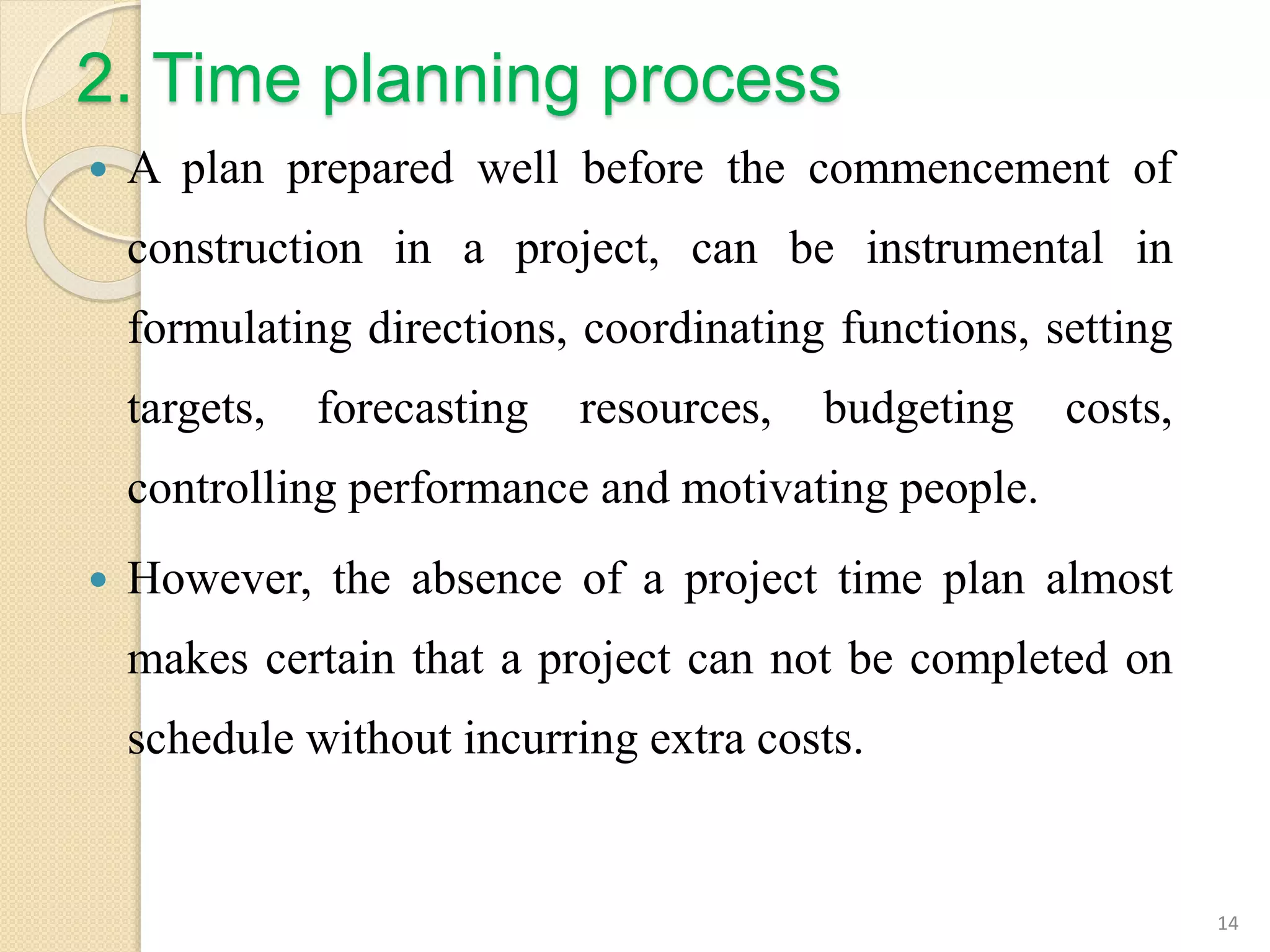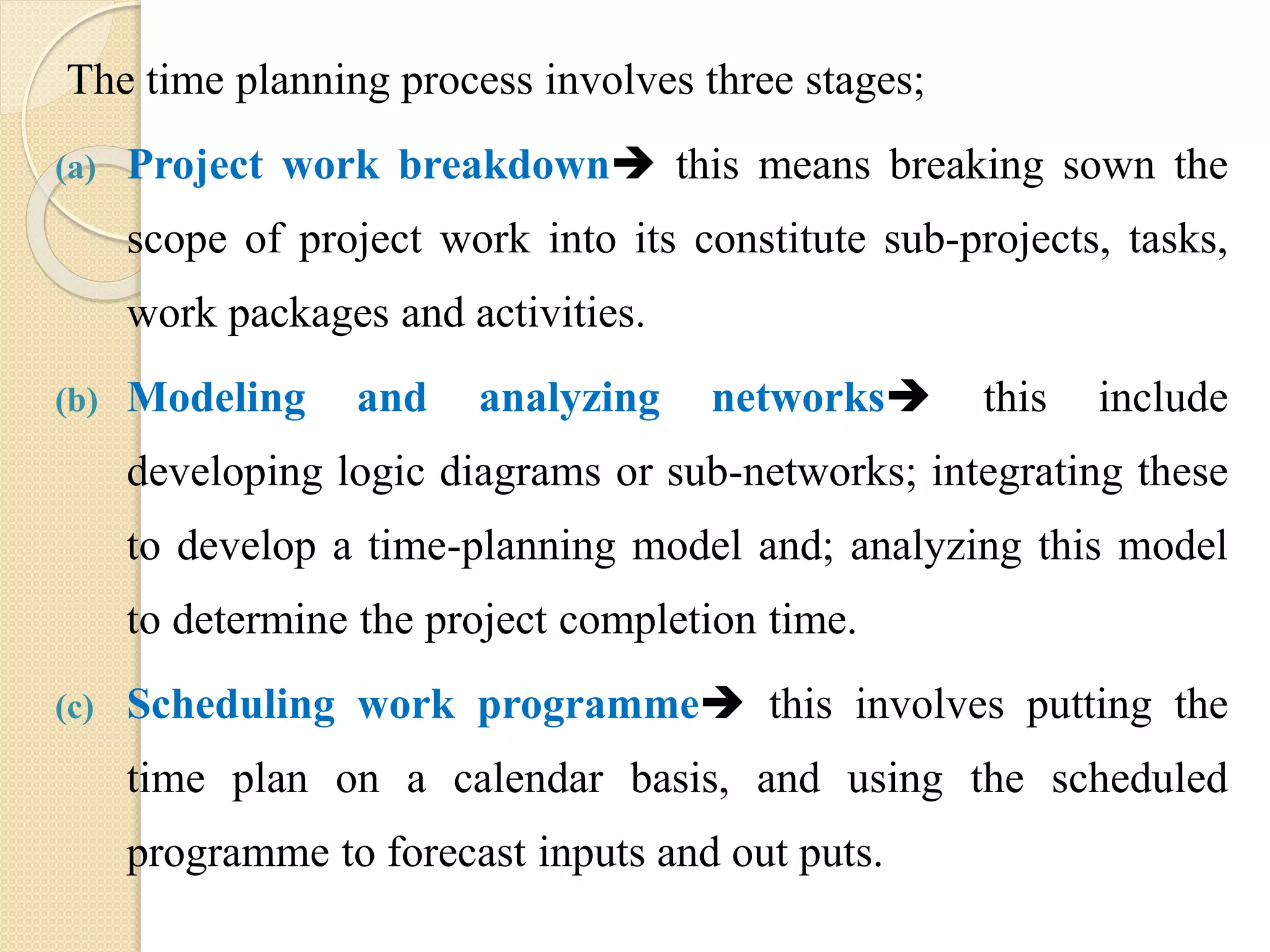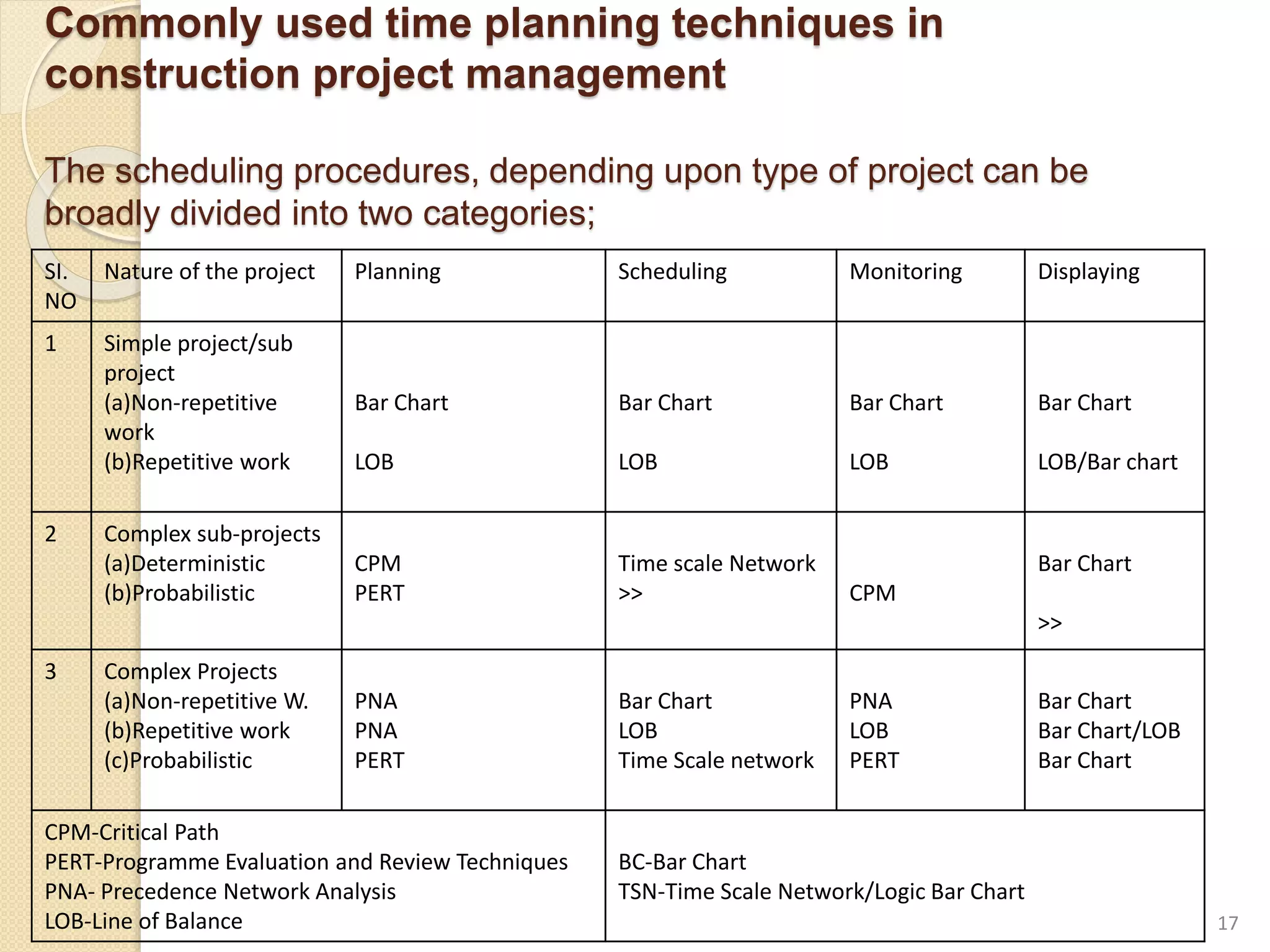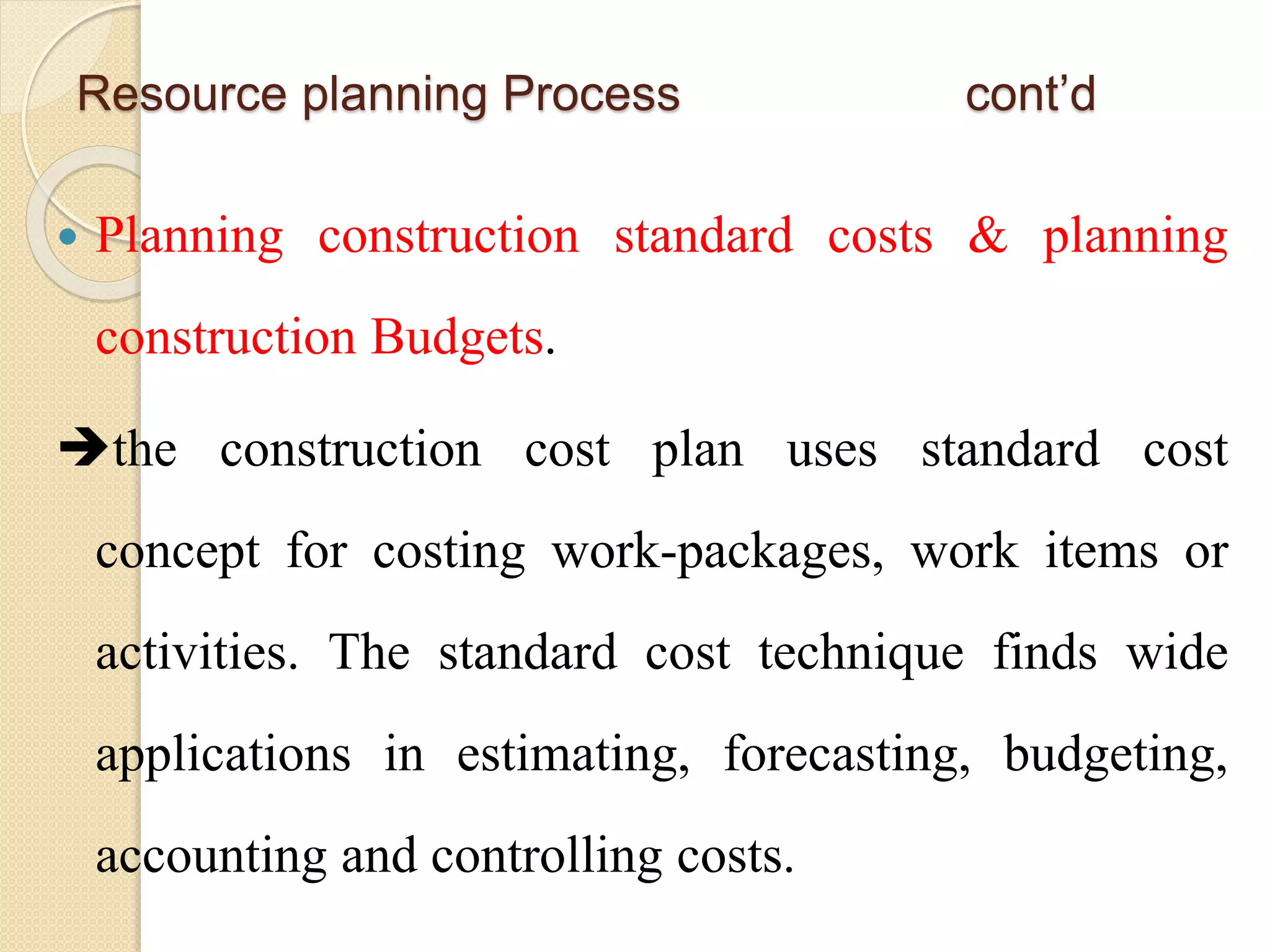The document outlines the fundamentals of project planning and scheduling in construction management, detailing various stages of project planning, methods, and types of project plans. It emphasizes the importance of a structured planning process, including data collection, resource forecasting, and control mechanisms to ensure successful project completion. Additionally, it covers the methodologies for resource and time scheduling, highlighting the need for effective monitoring and corrective actions throughout the project lifecycle.






